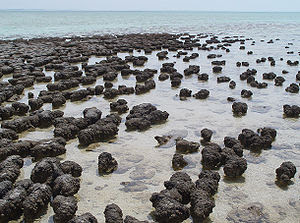1. adhering junction: Junction where a mass of anchored proteins help adjoining cells adhere.
3. blood: Fluid connective tissue of water, solutes, and formed elements (blood cells, platelets). Transports substances to and from cells, helps maintain internal environment.
6. cartilage: Connective tissue with solid, pliable intercellular material that resists compression.
7. dense, irregular connective tissue: Animal tissue with fibroblasts, many asymmetrically positioned fibers in ground substance. In skin and some capsules around organs.
8. dense, regular connective tissue: Animal tissue with rows of fibroblasts between parallel bundles of fibers. In tendons, elastic ligaments.
9. ectoderm: The first-formed, outermost primary tissue layer of animal embryos; gives rise to nervous system tissues and integument's outer layer.
11. endoderm: Inner primary tissue layer of animal embryos; source of inner gut lining and derived organs.
12. epithelium: Animal tissue that covers external surfaces and lines internal cavities and tubes. One surface is free and the other rests on a basement membrane.
13. exocrine gland: Glandular structure that secretes products, usually through ducts or tubes, to a free epithelial surface.
14. gap junction: Cylindrical arrays of proteins in the plasma membrane that pair up as open channels for signals between adjoining cells.
16. homeostasis: State in which physical and chemical aspects of internal environment (blood, interstitial fluid) are being maintained within ranges suitable for cell activities.
18. loose connective tissue: Animal tissue with fibers, fibroblasts loosely arrayed in semifluid ground substance.
19. mesoderm: Primary tissue layer of all large, complex animals; gives rise to many internal organs and part of the integument.
21. neuroglia: Collectively, cells that structurally and metabolically support neurons. They make up about half the volume of nervous tissue in vertebrates.
27. tight junction: Cell junction where strands of fibrous proteins oriented in parallel with a tissue's free surface collectively block leaks between the adjoining cells.


















































